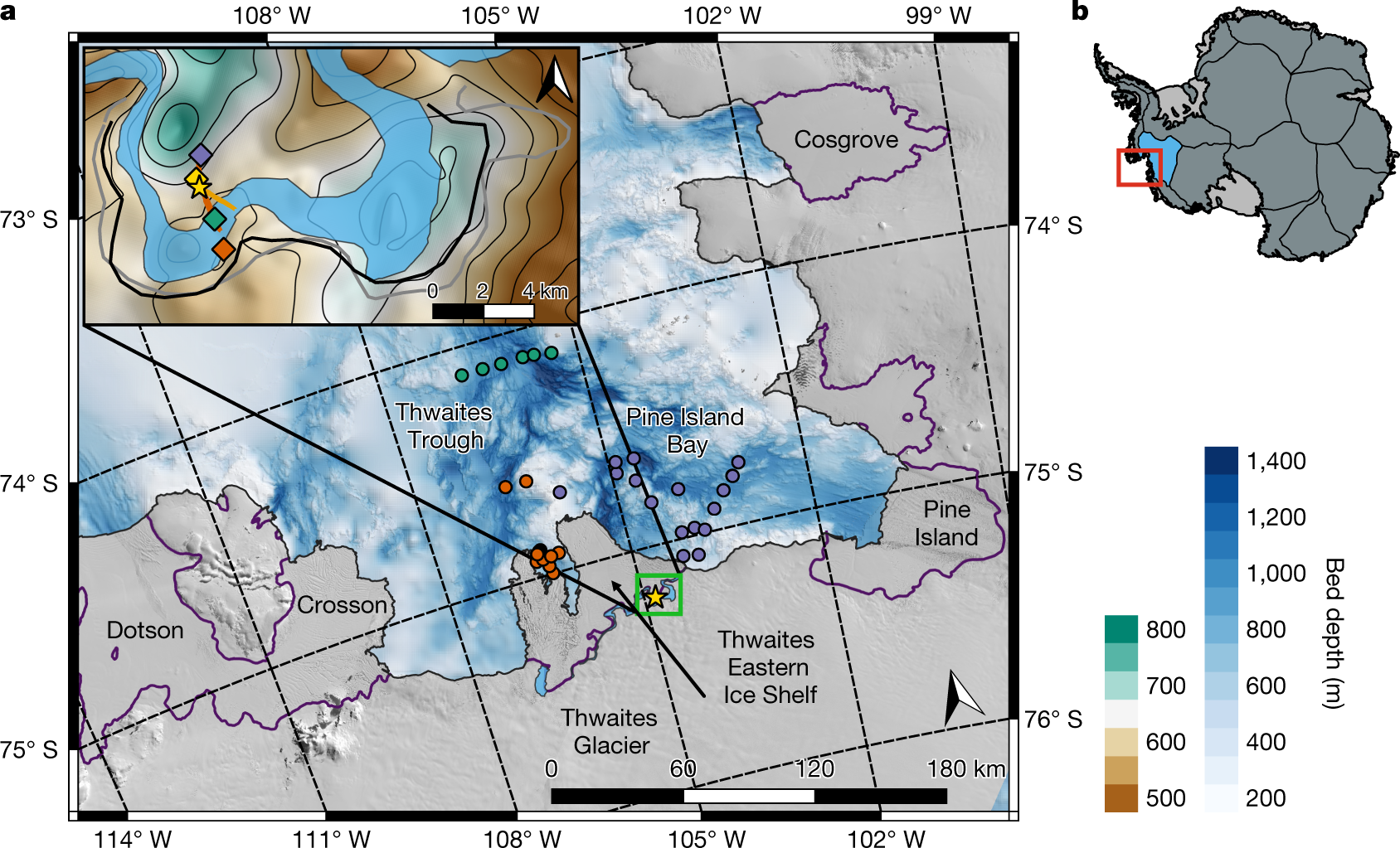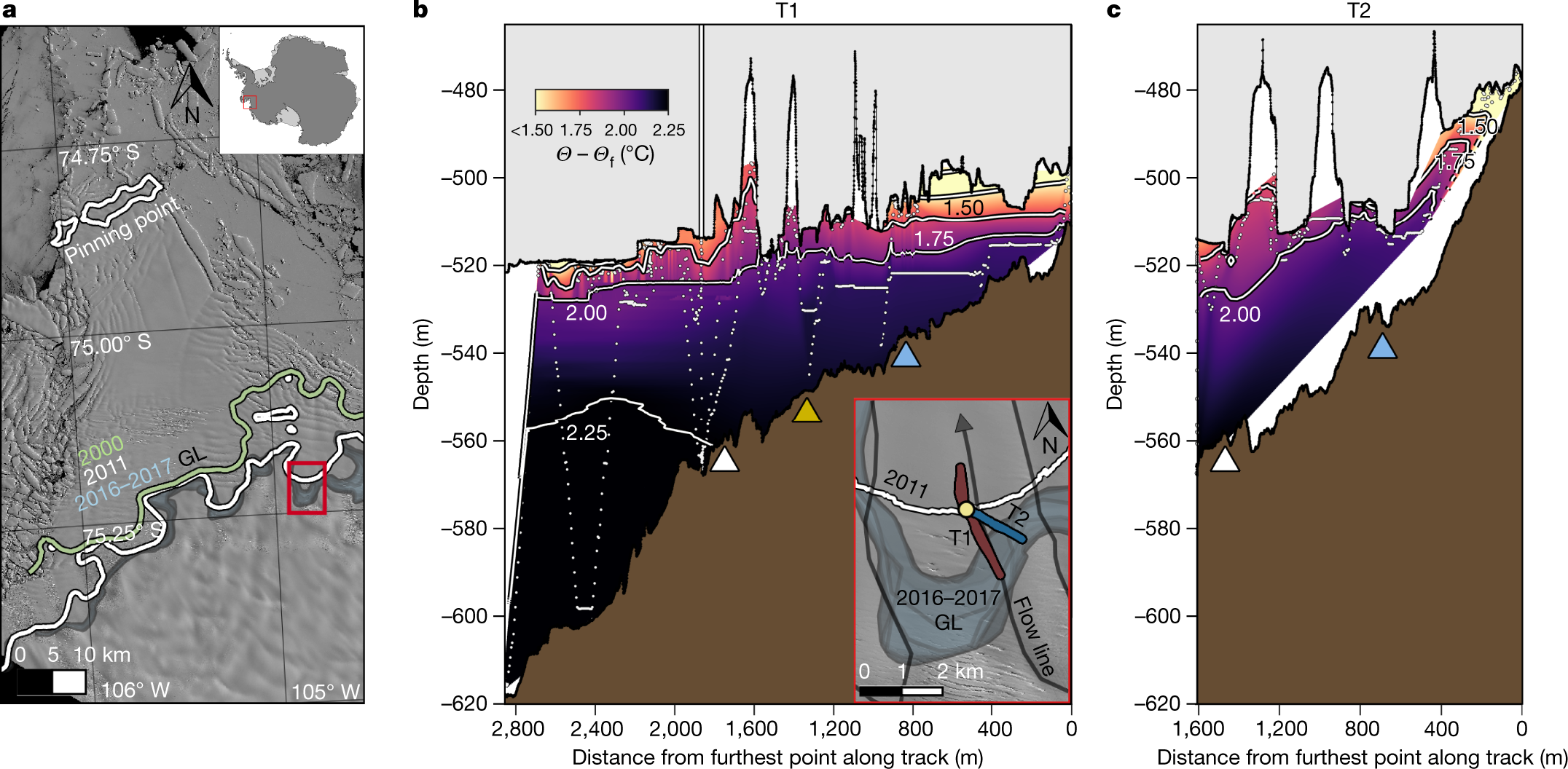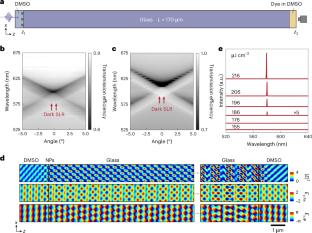水中ロボット「アイスフィン」で南極氷河の融解を間近に見ることができる成果 Results provide close-up view of melting beneath Antarctic Glacier using underwater robot Icefin
2023-02-15 ニューヨーク大学 (NYU)
◆ニューヨーク大学の流体力学研究所とニューヨーク大学アブダビ校の地球海面変動センターの所長であり、このプロジェクトの米国側主任研究者であるDavid Holland氏は、「スウェイトの西側で非常に大きな融解が起こっているという新しい観測結果を加えることによって、世界の海との氷河の相互関係についてより大きく完全な図が現れてきました」と説明しています。”西側の融解速度は、これまで南極で見られた中で最も高く、氷河が現在後退している可能性を示唆しています。”
◆この研究結果は、ネイチャー誌の2つの論文で報告され、フロリダ州ほどの大きさの氷河が、将来の海面上昇にどのように寄与しているかを理解する上で、重要な一歩を踏み出すことになりました。具体的には、浮氷棚の下で融解が進んでいるものの、現在の融解速度は多くのコンピュータモデルが現在推定しているよりも遅いことが明らかになった。
◆棚氷の底とその下の海との間に新鮮な水の層があるため、棚氷の平らな部分では融解の速度が遅くなるのです。しかし、意外なことに、棚氷の底に階段状の地形が形成されていた。この部分や氷の割れ目で、急激な融解が起こっているのだ。
◆スウェイツ氷河は、南極大陸で最も変化の激しい氷河のひとつで、海底に接する接地帯は1990年代後半から14km、つまり8マイル以上後退している。南極大陸の氷床の多くは海面下にあり、急速かつ不可逆的な氷の減少の影響を受けやすく、数世紀以内に世界の海面が半メートル以上上昇する可能性があります。
◆この新しいデータは、南極で行われた最大級の国際的なフィールドキャンペーンである「英米スウェイツ氷河共同研究」のプロジェクトの1つであるMELTプロジェクトの一部として収集されたものです。MELTチームは、スウェイツ東棚氷の下にある接地線の観測を行い、この重要な領域で氷と海がどのように相互作用しているかを理解するために実施されました。
<関連情報>
- https://www.nyu.edu/about/news-publications/news/2023/february/scientists-discover-new-processes-driving-retreat-of-thwaites-gl.html
- https://www.nature.com/articles/s41586-022-05586-0
- https://www.nature.com/articles/s41586-022-05691-0
東部スウェイツ氷河接地帯における基底融解の抑制 Suppressed basal melting in the eastern Thwaites Glacier grounding zone
Peter E. D. Davis,Keith W. Nicholls,David M. Holland,Britney E. Schmidt,Peter Washam,Kiya L. Riverman,Robert J. Arthern,Irena Vaňková,Clare Eayrs,James A. Smith,Paul G. D. Anker,Andrew D. Mullen,Daniel Dichek,Justin D. Lawrence,Matthew M. Meister,Elisabeth Clyne,Aurora Basinski-Ferris,Eric Rignot,Bastien Y. Queste,Lars Boehme,Karen J. Heywood,Sridhar Anandakrishnan & Keith Makinson
Nature Published:15 February 2023
DOI:https://doi.org/10.1038/s41586-022-05586-0

Abstract
Thwaites Glacier is one of the fastest-changing ice–ocean systems in Antarctica1,2,3. Much of the ice sheet within the catchment of Thwaites Glacier is grounded below sea level on bedrock that deepens inland4, making it susceptible to rapid and irreversible ice loss that could raise the global sea level by more than half a metre2,3,5. The rate and extent of ice loss, and whether it proceeds irreversibly, are set by the ocean conditions and basal melting within the grounding-zone region where Thwaites Glacier first goes afloat3,6, both of which are largely unknown. Here we show—using observations from a hot-water-drilled access hole—that the grounding zone of Thwaites Eastern Ice Shelf (TEIS) is characterized by a warm and highly stable water column with temperatures substantially higher than the in situ freezing point. Despite these warm conditions, low current speeds and strong density stratification in the ice–ocean boundary layer actively restrict the vertical mixing of heat towards the ice base7,8, resulting in strongly suppressed basal melting. Our results demonstrate that the canonical model of ice-shelf basal melting used to generate sea-level projections cannot reproduce observed melt rates beneath this critically important glacier, and that rapid and possibly unstable grounding-line retreat may be associated with relatively modest basal melt rates.
Thwaites氷河接地線付近の不均質な融解現象 Heterogeneous melting near the Thwaites Glacier grounding line
B. E. Schmidt,P. Washam,P. E. D. Davis,K. W. Nicholls,D. M. Holland,J. D. Lawrence,K. L. Riverman,J. A. Smith,A. Spears,D. J. G. Dichek,A. D. Mullen,E. Clyne,B. Yeager,P. Anker,M. R. Meister,B. C. Hurwitz,E. S. Quartini,F. E. Bryson,A. Basinski-Ferris,C. Thomas,J. Wake,D. G. Vaughan,S. Anandakrishnan,E. Rignot,J. Paden & K. Makinson
Nature Published:15 February 2023
DOI:https://doi.org/10.1038/s41586-022-05691-0

Abstract
Thwaites Glacier represents 15% of the ice discharge from the West Antarctic Ice Sheet and influences a wider catchment1,2,3. Because it is grounded below sea level4,5, Thwaites Glacier is thought to be susceptible to runaway retreat triggered at the grounding line (GL) at which the glacier reaches the ocean6,7. Recent ice-flow acceleration2,8 and retreat of the ice front8,9,10 and GL11,12 indicate that ice loss will continue. The relative impacts of mechanisms underlying recent retreat are however uncertain. Here we show sustained GL retreat from at least 2011 to 2020 and resolve mechanisms of ice-shelf melt at the submetre scale. Our conclusions are based on observations of the Thwaites Eastern Ice Shelf (TEIS) from an underwater vehicle, extending from the GL to 3 km oceanward and from the ice–ocean interface to the sea floor. These observations show a rough ice base above a sea floor sloping upward towards the GL and an ocean cavity in which the warmest water exceeds 2 °C above freezing. Data closest to the ice base show that enhanced melting occurs along sloped surfaces that initiate near the GL and evolve into steep-sided terraces. This pronounced melting along steep ice faces, including in crevasses, produces stratification that suppresses melt along flat interfaces. These data imply that slope-dependent melting sculpts the ice base and acts as an important response to ocean warming.



 岩手県防災航空隊(東邦航空受託運航)アグスタAW139(回転翼航空機)の事故[消火活動中の散水による人の負傷](岩手県下閉伊郡岩泉町、令和4年4月3日)](https://tiisys.com/wp-content/uploads/2023/02/herikoputa-150x150.jpg)